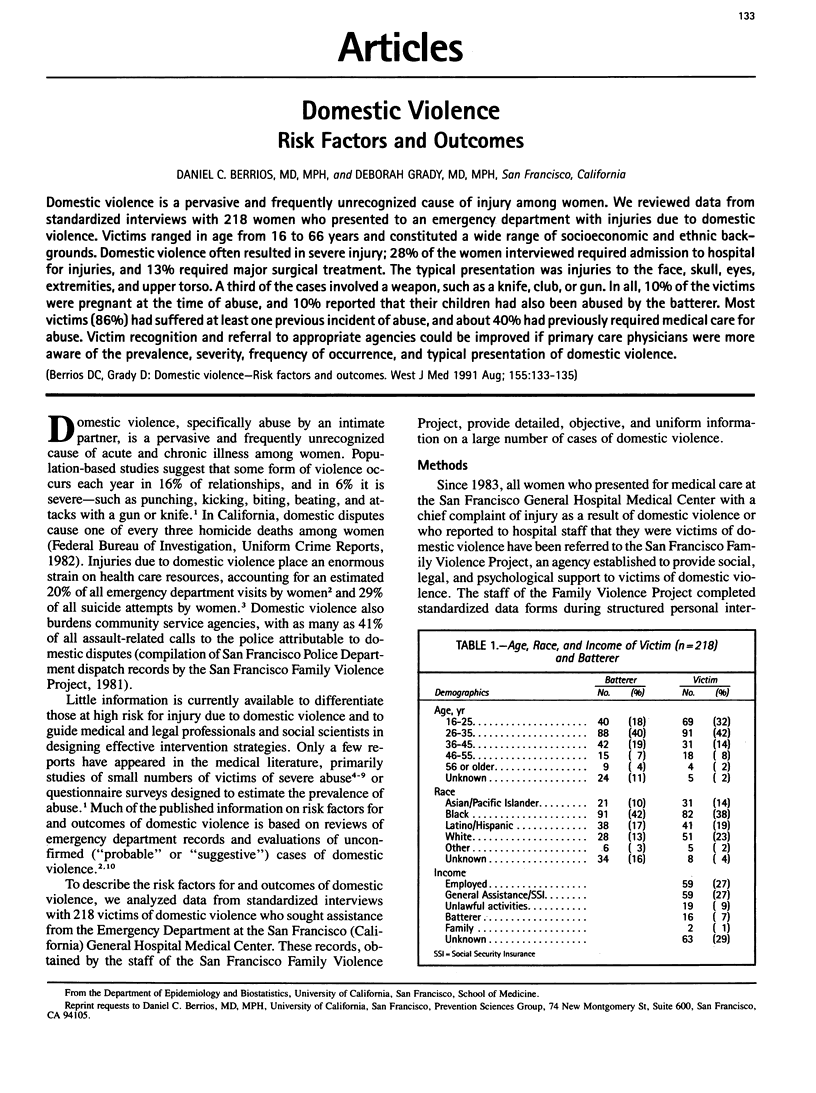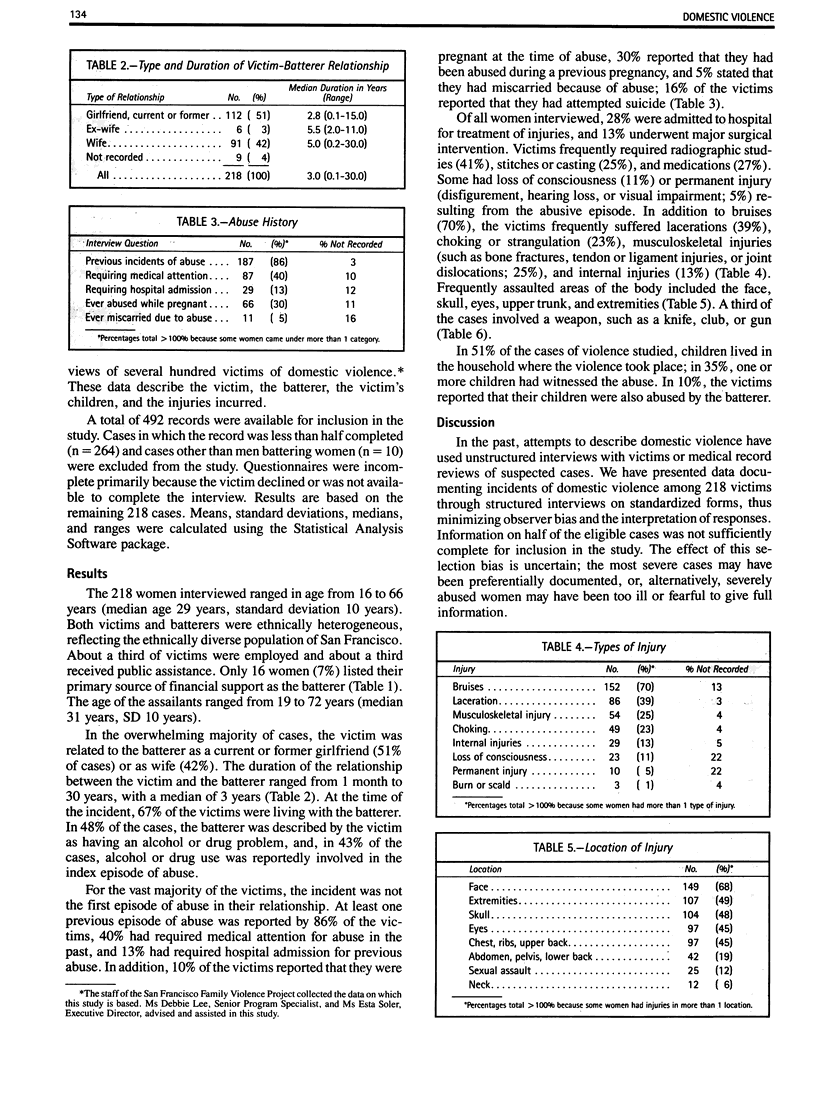Abstract
Domestic violence is a pervasive and frequently unrecognized cause of injury among women. We reviewed data from standardized interviews with 218 women who presented to an emergency department with injuries due to domestic violence. Victims ranged in age from 16 to 66 years and constituted a wide range of socioeconomic and ethnic backgrounds. Domestic violence often resulted in severe injury; 28% of the women interviewed required admission to hospital for injuries, and 13% required major surgical treatment. The typical presentation was injuries to the face, skull, eyes, extremities, and upper torso. A third of the cases involved a weapon, such as a knife, club, or gun. In all, 10% of the victims were pregnant at the time of abuse, and 10% reported that their children had also been abused by the batterer. Most victims (86%) had suffered at least one previous incident of abuse, and about 40% had previously required medical care for abuse. Victim recognition and referral to appropriate agencies could be improved if primary care physicians were more aware of the prevalence, severity, frequency of occurrence, and typical presentation of domestic violence.
Full text
PDF


Selected References
These references are in PubMed. This may not be the complete list of references from this article.
- Dewsbury A. R. Battered wives. Family violence seen in general practice. R Soc Health J. 1975 Dec;95(6):290–294. doi: 10.1177/146642407509500610. [DOI] [PubMed] [Google Scholar]
- Gayford J. J. Wife battering: a preliminary survey of 100 cases. Br Med J. 1975 Jan 25;1(5951):194–197. doi: 10.1136/bmj.1.5951.194. [DOI] [PMC free article] [PubMed] [Google Scholar]
- McLeer S. V., Anwar R. A., Herman S., Maquiling K. Education is not enough: a systems failure in protecting battered women. Ann Emerg Med. 1989 Jun;18(6):651–653. doi: 10.1016/s0196-0644(89)80521-9. [DOI] [PubMed] [Google Scholar]
- McLeer S. V., Anwar R. A study of battered women presenting in an emergency department. Am J Public Health. 1989 Jan;79(1):65–66. doi: 10.2105/ajph.79.1.65. [DOI] [PMC free article] [PubMed] [Google Scholar]
- Parker B., Schumacher D. N. The battered wife syndrome and violence in the nuclear family of origin: a controlled pilot study. Am J Public Health. 1977 Aug;67(8):760–761. doi: 10.2105/ajph.67.8.760. [DOI] [PMC free article] [PubMed] [Google Scholar]
- Petro J. A., Quann P. L., Graham W. P., 3rd Wife abuse. The diagnosis and its implications. JAMA. 1978 Jul 21;240(3):240–241. doi: 10.1001/jama.240.3.240. [DOI] [PubMed] [Google Scholar]
- Rounsaville B. J. Battered wives: barriers to identification and treatment. Am J Orthopsychiatry. 1978 Jul;48(3):487–494. doi: 10.1111/j.1939-0025.1978.tb01337.x. [DOI] [PubMed] [Google Scholar]
- Stark E., Flitcraft A., Frazier W. Medicine and patriarchal violence: the social construction of a "private" event. Int J Health Serv. 1979;9(3):461–493. doi: 10.2190/KTLU-CCU7-BMNQ-V2KY. [DOI] [PubMed] [Google Scholar]


